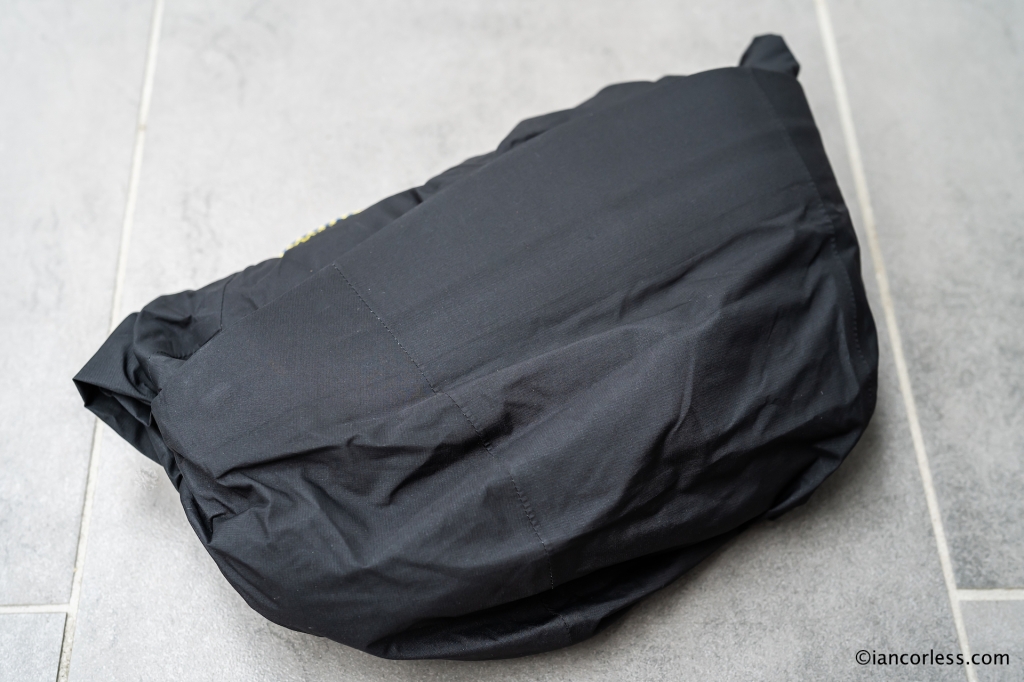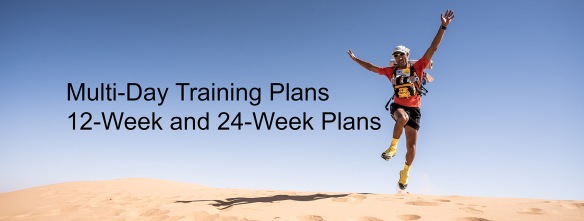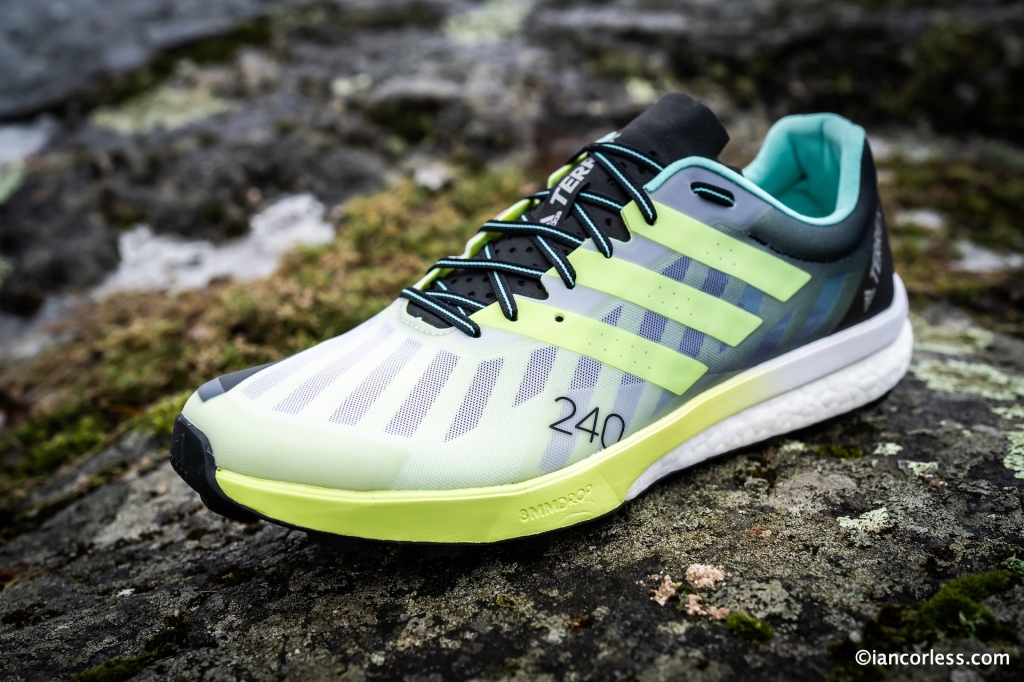
I review a great deal of shoes. In the last 12-months alone, I have worked my way through over 20 different pairs and models. In all honesty, running shoes these days are generally all good. Yes, some are better than others but it’s all personal, what works for one, may not work for another. There are so many variables; drop, cushioning, support or the lack of it, toe box width, lacing, upper and I could go on.
Read about : How to find your running shoe size and fit

So, if the shoes are neutral, I am pretty much always able to run in the shoe irrespective of the toe box width and drop. Actually, I like switching drops and currently, I use 0 drop through to a very rare 12mm (which is. Winter stud) drop. In regard to toe box, if I am running on technical terrain, I much prefer a narrow/ precision fit which gives me an assured control, by contrast, when running longer and on less technical terrain, a wider toe box provides more toe splay and comfort.
I guess what I am saying, no one shoe does all things!
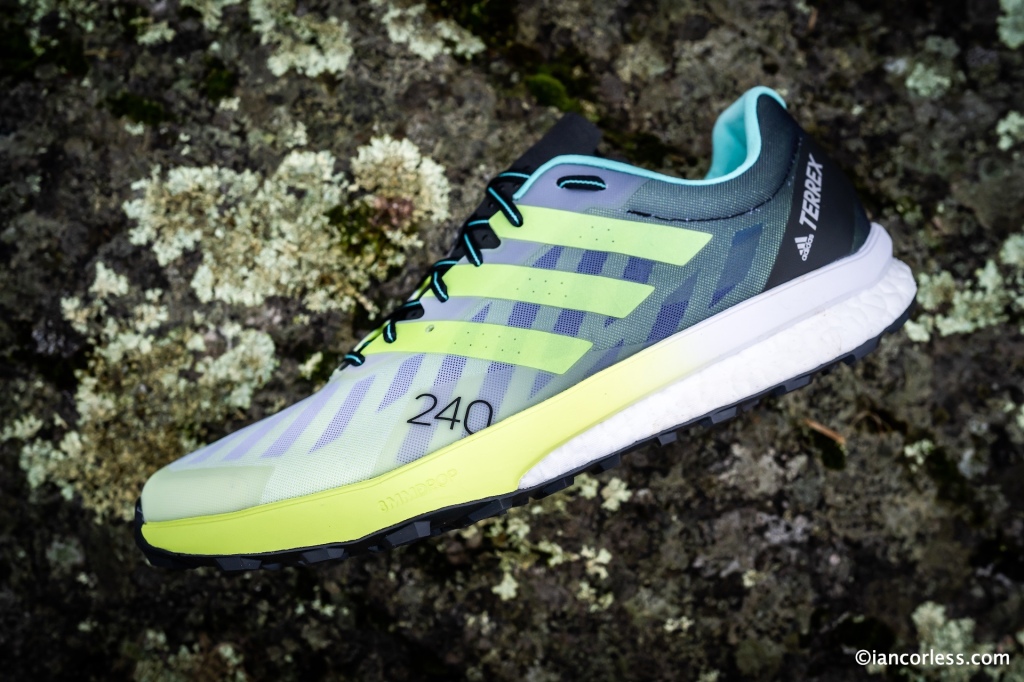
Recently, a couple of shoes have excited and the latest is the adidas Terrex Speed Ultra.
I first heard rumblings of this new shoe well over a year ago, good friend, Tom Evans and adidas Terrex athlete was involved in the design process and it was clear, via his results, that a fast, light and responsive trail running shoe was coming. A win at Tarawera in New Zealand and 3rd place at the iconic Western States set the stage.
I have to say, I always love getting new shoes. Opening the box of the Terrex Speed Ultra was a real surprise, the colour way and look was really impressive.

I messaged Tom, “I have got the Speed Ultra!”
“…they are 2 years in the making!! And one of the main reasons I joined Terrex! Hope you like them, I’m SO happy with how they turned out!” was the reply.
FIRST IMPRESSIONS
The colour way was an instant eye catcher (a black and white version is also available) with a mix yellow, greens, grey, black, white and a flash of pink. adidas list the colour as, Cloud White / Solar Yellow / Matte Silver.

On the side is a ‘240’ which signifies the weight (typically for a UK8.5) and trust me, these are the lightest most ‘floaty’ trail running shoes I have had the pleasure to hold. Incredible!

The upper is seamless and like a fine sieve used in a Michelin star restaurant with minimalist overlay at the toe, the side and the heel. The drop is stated in the side, 8mm.

Inside the shoe, there is another layer which adds more structure, it’s super thin and its pattern can be seen from the outside of the shoe, particularly at the front where you see lines that move around to the side of the shoe.

The cushioning is solid at the front and as you move to the rear of the shoe, you get to see the ‘bubble’ like boost. ‘Lightstrike’ is written in the cushioning. Lightsrike provides energy return, cushions every stride and provides comfort over the long-haul of an ultra. Cushioning is 18mm at the front and 26mm rear – this is confirmed on the outsole along with the 2.5mm lugs.


The heel area is well cushioned, and the tongue is minimalist with holes all over to reduce weight and add breathability. It’s not a sock liner fit but it is attached at the sides which provides a more secure hold of the foot and instep.

Turning the shoe over, the outsole confirms the shoes intended use – hard, dry and fast trails. The Continental rubber has multi-directional 2.5mm lugs and in the middle, there is a cutaway for the ‘Torsion System’ which provides a thermoplastic arch bridging the heel and the forefoot assisting them to move independently and adapt to various surfaces.
IN USE
It’s just a wow! It’s been a long time that I have pulled on a shoe, run 12-miles off the bat and not taken the smile off my face because the footwear is just bouncing me and pulling me along and tempting me to run at a pace that I can’t maintain.
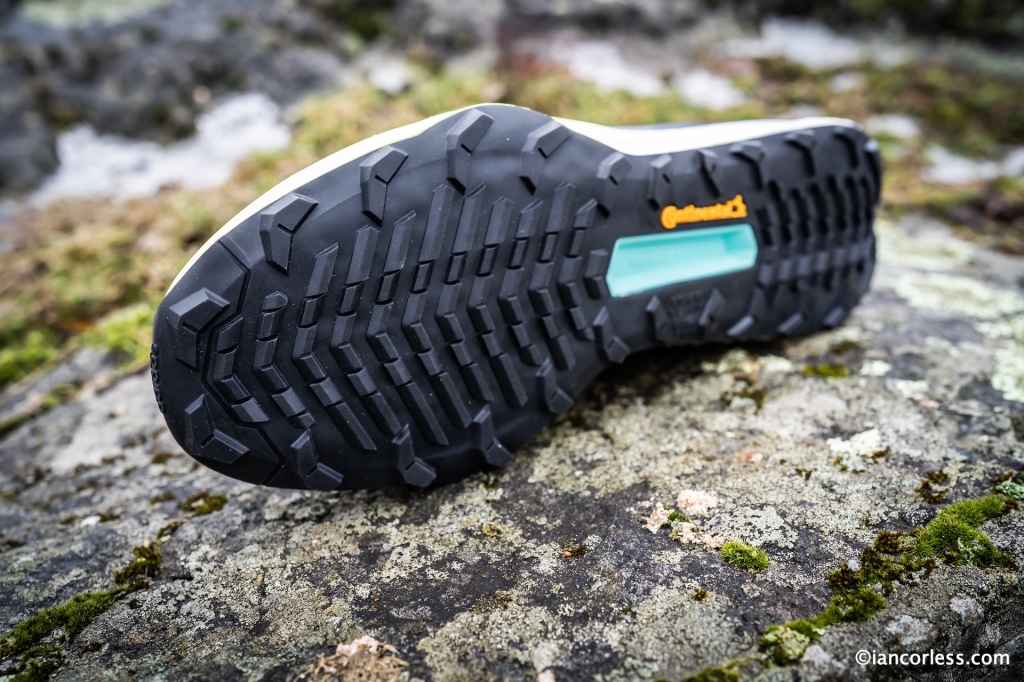
The Terrex Speed Ultra is quite simply stunning!
Fitting true to size, (I use EU44 272g) slipping the shoe on the toe box is that wonderful middle ground of having enough width to allow toe splay, but not so wide that you don’t have precision or control. Now of course, how the shoe fits does depend on the individual, but based on all my shoe reviews, the Speed Ultra is a wonderful middle ground.

Foot hold is superb, the thin tongue is padded enough for comfort but still allows for a great tight fit. The 6 eyelets allow for great lacing and hold particularly on the navicular bone. There are two ‘additional’ eyelets at the front to adjust lacing and at the top, there are the two additional eyelets that would allow lock-lacing or similar. The upper is extremely breathable.

The cushioning is immediately noticeable and although neutral, there does feel just a hint of support under the arch. It’s minimal! The Speed Ultra is not soft and squidgy, they somehow manage to balance soft and firm. Maybe this is the mix of boost and Lightstrike? The 18/26 cushioning is superb and still gives feel for the ground.
The shoe needed no bedding in, from the off they were comfortable and just felt superb. They forced me or influenced me to run with good technique and constantly they enticed me to go faster. It has been a long, long time that I have had a shoe that made me want to open up the throttle. Hitting the ground, the cushioning was firm but equally soft enough to propel me forward… Had I been told that this shoe had a super thin carbon plate inside, I would not have been surprised. The heritage of adidas making road shoes can be felt here in the Speed Ultra. After all, hard trail and single-track is very similar to road. The difference primarily comes with the outsole.

The outsole is by Continental and they make great rubber which really provides a secure grip in wet or dry. The 2.5mm lugs quite simply are for hard and dry trail, this is NOT a muddy trail shoe. As Tom Evans has shown, hard, fast and long ultras such as Western States are the terrain for the Speed Ultra. This shoe would be amazing for many US trails.
Road or hard trail, the Speed Ultra switches between the two seamlessly and in all honesty, if I was running a road race, the Speed Ultra would be my shoe. It’s that good! The Continental outsole also provides a little more security and grip. Now of course, I am not ‘competing’ for a win in a road race, so, the marginal gains from a specific road shoe may well prove a better choice. Tom Evans for example, after all he did run 63:14 for a half-marathon and I am sure he used a specific road shoe.

On trail, if it’s hard, rocky, tree routes or single-track, the Speed Ultra performs. The shoes fly along managing to provide precision and comfort all in a great package. The 8mm drop and cushioning provide all the comfort needed for a long day, hence the ‘ultra’ in the shoe title.
Ultimately, the Speed Ultra is one of the best shoes I have used in a long time.
SUMMARY
This is a glowing review. To clarify, the shoes were provided to test, as are all the shoes that I review. But this is not a paid review.
The Speed Ultra is one of the most exciting shoes I have used for some time. They put a smile on my face, and they tempted me to run longer.
Comfortable, secure and pleasure to wear. The Speed Ultra is going to be on my feet for any dry trail or road run for some time. On trail, the drop and comfort are perfect be that on gravel, path, hard pack single-track, rock or tree roots; wet or dry. However, this is not a shoe for mud or sloppy terrain… The outsole is not up to the job of gripping in soft stuff and for me, the cushioning would have me to high off the ground, I prefer to be lower and feeling the terrain when it is more challenging. Not a criticism of the shoe, just a clarification of how the Speed Ultra should be used.
*****
To clarify, the shoes were provided to test, as are all the shoes that I review. But this is not a paid review.
Please support this website. I believe everyone deserves to read quality, independent and factual articles – that’s why this website is open to all. Free press has never been so vital. I hope I can keep providing independent articles with your help. Any contribution, however big or small, is so valuable to help finance regular content. Please support me on Patreon HERE.

Follow on:
Instagram – @iancorlessphotography
Twitter – @talkultra
facebook.com/iancorlessphotography
Web – www.iancorless.com
Web – www.iancorlessphotography.com
Image sales –www.iancorless.photoshelter.com










